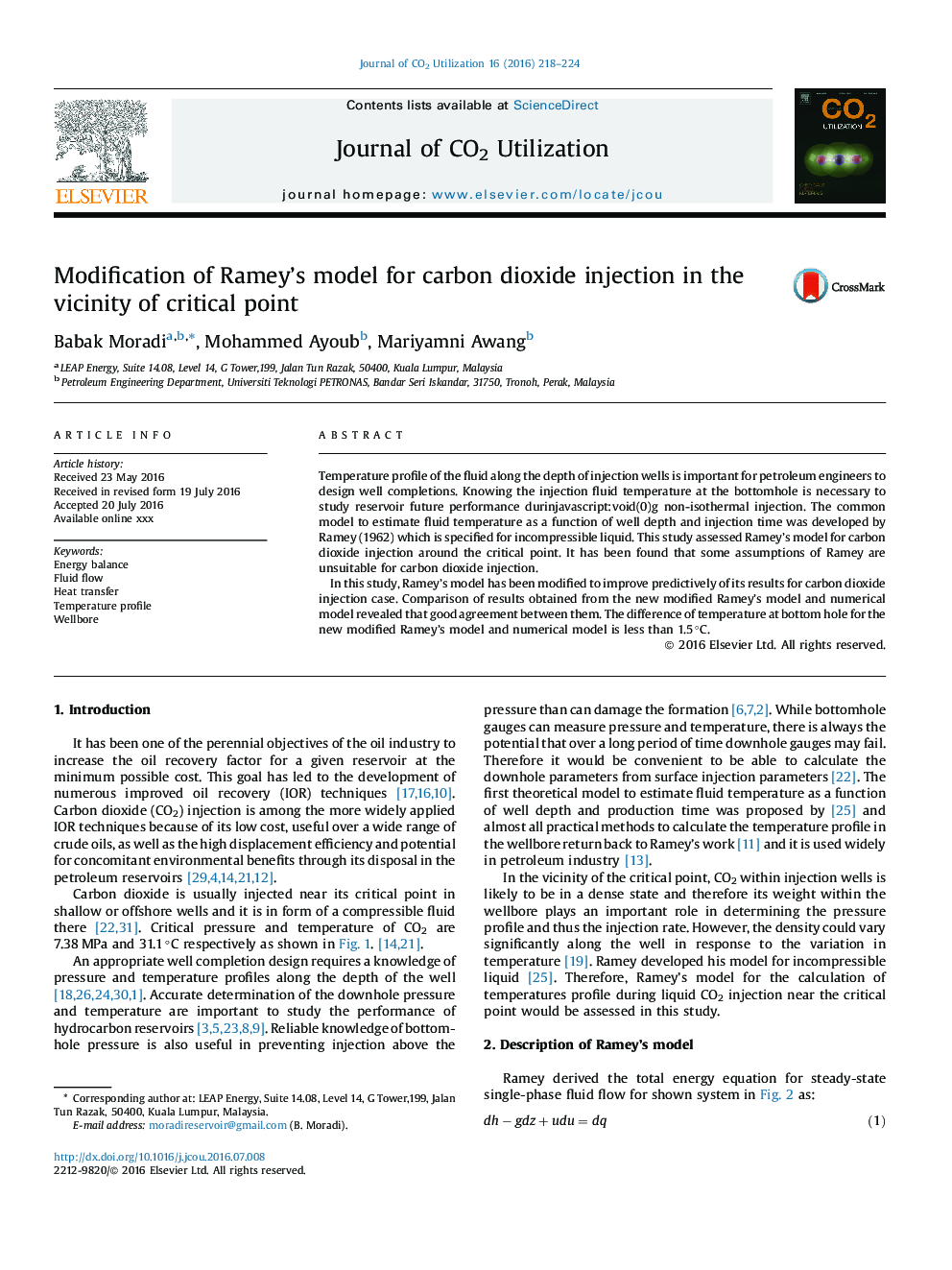| Article ID | Journal | Published Year | Pages | File Type |
|---|---|---|---|---|
| 63535 | Journal of CO2 Utilization | 2016 | 7 Pages |
•Ramey’s model has been modified.•Validity of the new model has been checked against the numerical model.•Joule Thomson effect should be considered to predict temperature profile during carbon dioxide injection in the vicinity of critical point.•The acceleration and friction terms contribute so weak in building pressure profile during carbon dioxide injection.
Temperature profile of the fluid along the depth of injection wells is important for petroleum engineers to design well completions. Knowing the injection fluid temperature at the bottomhole is necessary to study reservoir future performance durinjavascript:void(0)g non-isothermal injection. The common model to estimate fluid temperature as a function of well depth and injection time was developed by Ramey (1962) which is specified for incompressible liquid. This study assessed Ramey’s model for carbon dioxide injection around the critical point. It has been found that some assumptions of Ramey are unsuitable for carbon dioxide injection.In this study, Ramey’s model has been modified to improve predictively of its results for carbon dioxide injection case. Comparison of results obtained from the new modified Ramey’s model and numerical model revealed that good agreement between them. The difference of temperature at bottom hole for the new modified Ramey’s model and numerical model is less than 1.5 °C.
